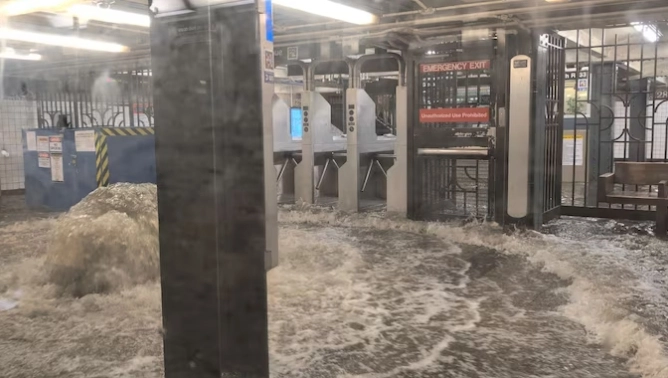
New York City faced a remarkable convergence of weather extremes this week as a relentless heatwave coincided with record-breaking torrential rains, unleashing chaos on transportation, infrastructure, and daily life.
On July 14th, slow-moving thunderstorms drenched the city and much of the Northeast, triggering flash floods that submerged streets, paralysed subway lines, and prompted a state of emergency in parts of New Jersey. Central Park recorded 2.64 inches of rainfall—the highest ever for that date—with some areas experiencing over two inches in a single hour, making it the second-wettest hour in New York City history.
Flooded subway stations and stalled vehicles offered a stark visual of the crisis, while airport operations and major commuter routes were severely disrupted.
Flash floods tragically claimed at least two lives in New Jersey, underscoring the deadly risk posed by the intense storms.
Even as New Yorkers braced for the floodwaters, forecasters warned of an imminent heatwave. From July 16 through July 18, temperatures were expected to soar into the upper 80s to low 90s (F), with heat index values possibly reaching 105F, intensified by high humidity.
Officials issued heat advisories and opened cooling centres to help residents, especially those without air conditioning, cope with the dangerous conditions.
Mayor Eric Adams urged the public to minimise outdoor activity, stay hydrated, and conserve energy.
This rare overlap of extreme heat and deluge is part of a broader pattern of volatile weather impacting much of the US this summer.
Meteorologists point to a "moisture-laden summer airmass" dominating the eastern US, supporting both heavy precipitation and the sweltering heat.
The phenomenon is amplified by climate change, which has increased both atmospheric temperatures and moisture content. These factors fuel more powerful storms and make extreme weather—like heatwaves and sudden downpours—both more frequent and severe.
“Everyone needs to remain vigilant,” New Jersey Governor Phil Murphy stated, describing the current situation as “one of those high humidity, elevated temperature, and intense storm patterns”.
Experts caution that such simultaneous weather events—once considered unlikely—are becoming the "new normal" as global temperatures rise. A
As New Yorkers mop up and brace for more stifling heat, city officials and scientists stress the need for resilience strategies, climate adaptation, and improved infrastructure to weather these extremes in the years ahead.